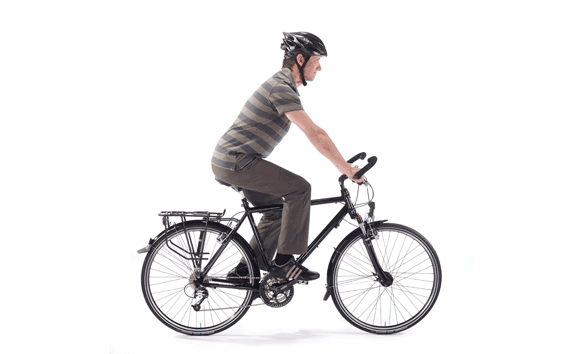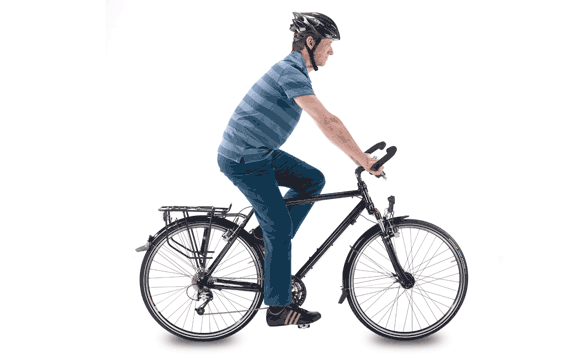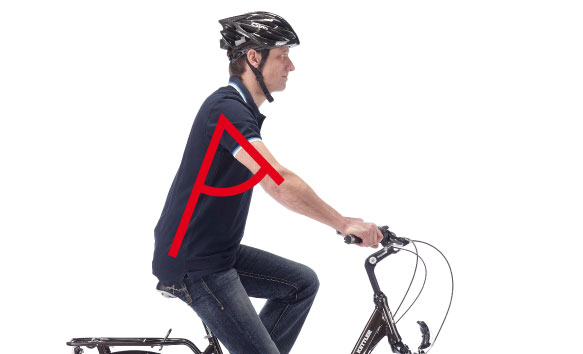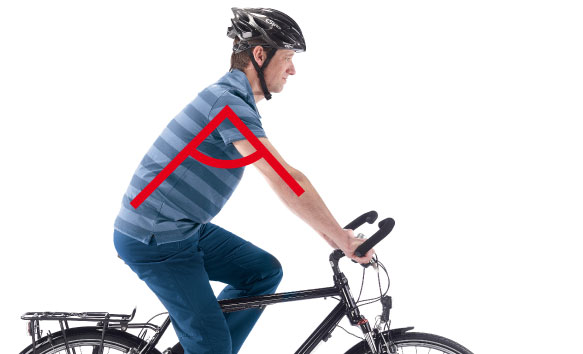Slide 1
Each position is characterized by a different upper-arm-to-torso angle. This determines how much supporting work the shoulders, arms and hands must do. The upper-arm-to-torso angle is set by adjusting the length and angle of the stem. If your bike has a stem that allows the angle to be adjusted, then you can fine-tune the upper-arm-to-torso angle most precisely.
Slide 2
Classic (Dutch) bike position: The angle is a very small one, the upper arms run almost parallel to the torso and the hands sit loosely on the handlebars (no supporting work).
Slide 3
City bike position: An angle of 90° is a good guide. But many people prefer a smaller angle, down to around 60°, because this means less supporting work for the shoulders, arms and hands.
Slide 4
Trekking bike position: The optimal angle is around 90°. The load is then very well distributed.
Slide 5
Sporty position: The angle is over 90°. This produces a flatter, more aerodynamic posture. The shoulders, arms and hands have to do a lot of supporting work. The pressure in the seat area shifts forward.















